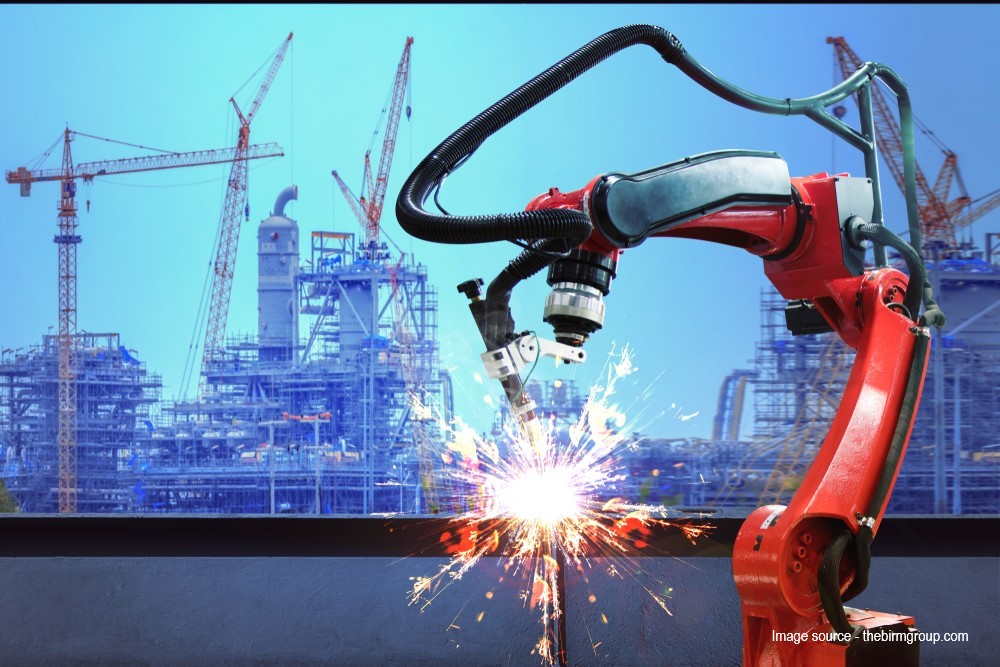
The construction industry has always been a cornerstone of human civilization, evolving over millennia to meet the demands of growing populations and advancing technologies. In recent years, one of the most significant technological advancements reshaping this sector is the integration of robots. From automating repetitive tasks to enhancing safety measures and increasing efficiency, robots are becoming indispensable in construction. This blog explores the transformative potential of robots in the construction industry and examines whether they are indeed the future.
Enhanced Efficiency and Productivity: Robots are revolutionizing construction by streamlining various processes, thus significantly enhancing efficiency and productivity. Unlike human workers, robots can operate continuously without fatigue, enabling round-the-clock construction activities. Automated bricklaying robots, for instance, can lay bricks at a pace far exceeding human capabilities while maintaining precision and accuracy. Similarly, drones equipped with cameras and sensors can swiftly survey construction sites, providing real-time data for project monitoring and management. By automating repetitive and labour-intensive tasks, robots free up human workers to focus on more complex and creative aspects of construction projects, thereby accelerating project timelines and reducing costs.
Improved Safety Standards: Safety is paramount in the construction industry, where workers are often exposed to hazardous environments and conditions. Robots play a crucial role in improving safety standards by undertaking tasks deemed too dangerous for human workers. For instance, unmanned aerial vehicles (UAVs) can inspect tall structures such as bridges and skyscrapers, minimizing the risk of falls or accidents associated with traditional inspection methods. Similarly, robotic exoskeletons can assist workers in lifting heavy loads, reducing the incidence of musculoskeletal injuries. By deploying robots for high-risk activities, construction companies can mitigate workplace accidents and ensure the well-being of their workforce.
Precision and Accuracy: Precision and accuracy are fundamental requirements in construction projects to ensure structural integrity and adherence to design specifications. Robots excel in executing tasks with unparalleled precision, thereby minimizing errors and rework. Advanced robotic systems equipped with sensors and algorithms can precisely measure and cut building materials, resulting in seamless assembly and construction. Additionally, robotic arms with built-in AI capabilities can adapt to dynamic environmental conditions, making on-the-fly adjustments to ensure precise execution of tasks. By leveraging robotics for precision-oriented activities, construction companies can uphold quality standards and deliver superior end products to clients.
Challenges and Considerations: Despite their transformative potential, the widespread adoption of robots in the construction industry is not without challenges. One of the primary concerns is the initial investment required for acquiring and implementing robotic technologies. While the long-term benefits in terms of increased efficiency and productivity are evident, some construction companies may hesitate to embrace robotics due to upfront costs. Moreover, there is a need for specialized training programs to equip workers with the skills required to operate and maintain robotic systems effectively. Additionally, concerns regarding job displacement and the potential impact on employment opportunities for human workers need to be addressed through proactive workforce development strategies and collaboration between industry stakeholders.
The Future Outlook: As technology continues to advance and robotics become more sophisticated and affordable, their role in the construction industry is poised to expand further. From autonomous construction vehicles to 3D printing robots capable of building entire structures, the possibilities are limitless. The future of construction will likely be characterized by increasingly interconnected and automated processes, where humans and robots collaborate synergistically to achieve unparalleled levels of efficiency, safety, and innovation. While challenges remain, the trajectory is clear – robots are indeed the future of the construction industry, shaping a new era of sustainable, resilient, and visionary built environments.
Robots are transforming the construction industry, offering a glimpse into a future where efficiency, safety, and precision converge to redefine traditional practices. While challenges exist, the potential benefits of integrating robotics into construction processes far outweigh the obstacles. As construction companies embrace technological advancements and innovation, robots will continue to play a central role in shaping the future of the industry, heralding a new era of unprecedented possibilities and opportunities for growth and development.
Testimonials
Very professional and efficient organization. Delivered a great product to a tight deadline.
ACE Power
Karl and the team are very professional and have a vast knowledge of BIM coordination.
Dwayne Willaims Babinda Electrics
We had multiple large projects with tight deadlines and needed a company we could trust. The teams delivery, attention to detail and understanding of what is being designed is always executed to a high standard.
Martin O’Donovan Envar Engineers
Draftech offered a flexible and reliable approach to working collaboratively with our team. They met our expectations and quality requirements and also offered up new ideas.
Draftech have proven to be a valuable and trustworthy resource and we will continue to work with Draftech on other projects.
Simon Marsden Umow Lai
Draftech is different from others in the professionalism and features they provide.
The ability to walk through projects in real time online provides invaluable insight into problem areas and helps provide an efficient resolution on the spot without many phone calls, emails and the necessity for us to paw through countless drawings to understand the issues.
Todd Morris Manager - Air mech
Draftech were put forward to FIP Electrical as the solution to Coordinate, Model, carry out clash detection, provide Electrical Services Shop Drawings, as built documentation and completed electrical model.
Simon Thorpe FIP Electrical
In close collaboration Draftech set up all our systems and model deliverables. In this process Draftech have proven to be a valuable resource for us and demonstrated commitment, understanding and professionalism.
David Skelley DJCoalition
Draftech’s attention to detail and proactive nature throughout the project assisted us in identifying issues before becoming evident on site, saving us both time and unexpected costs.
Matt Payne PJM Engineering Services
They delivered very high quality Revit models and associated 2D documentation at key milestones, working to a tight budget and in strict accordance with the Architects’ BIM requirements.
Peter Thomas Geoff Hesford
We found Draftech’s work to be of high standard and the team delivered exactly as agreed, in fact, when we considered the project complete, Draftech put further resources into the project as they were not satisfied.
John Johnson Beca
Engaging Draftech during design gave us the tools to make smart decisions.
Hansen Yuncken Design Manager - Michael Harkins
The drafting service is timely, reliable and fit for purpose for the built environment.
Peter Harvey Harvey Industries
Draftech stands apart from other drafting services that we have previously used in their attention to detail and ability to adapt to the individual client’s requirements.
Doug Holt McCaig Aircon
I can confidently recommend Draftech as a solid and reliable supplier, and experts in their field. I look forward to working with them again in the near future.
Chris Behan Norman Disney & Young
After seeing the benefits Draftech provided us on the Townsville Hospital Redevelopment we have set up a relationship with Draftech and intend to continue to use their BIM knowledge and skills for our future projects.
Brad Lund Energy Power Systems
Draftech has no competition as they are in a class of their own.
John Boyes Babinda Electrics
Draftech Developments Drafting and Design Capabilities, in conjunction with their outstanding level of Client service and support has provided great solutions to our engineering and Drafting Design portions within our Gorgon Barrow Island Project.
Aaron Hazelton Applied Electro Systems Pty Ltd
Draftech set up necessary systems and workflows very quickly, but also setup auditable estimating and weekly cost tracking processes that we utilised, requiring little maintenance.
TOM PURDON MPM GROUP




























